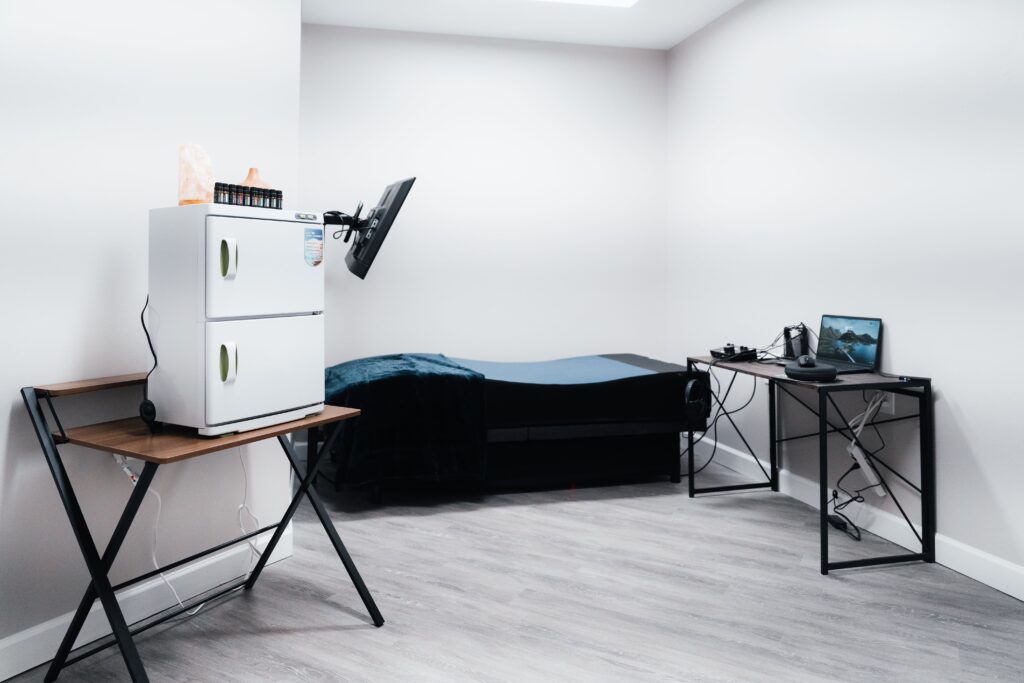Anxiety disorders can have both psychological and physical symptoms. Unfortunately, when you first experience certain physical effects, it can be difficult to determine if they are due to anxiety or some other cause. For example, do you know how to tell if shortness of breath is from anxiety?
How to Tell if Shortness of Breath is From Anxiety
Being unable to catch your breath can be an extremely distressing experience, regardless of the reason. But when you understand why you are having this problem, you may be a step closer to solving it.
If you’re not sure how to tell if shortness of breath is from anxiety, here are some suggestions:
- Do you experience shortness of breath when you haven’t been exercising or otherwise physically exerting yourself?
- Does your shortness of breath usually only occur in certain circumstances (such as when you’re in a crowd or a wide open space, or when you see a spider)?
- Do you find that you typically struggle with shortness of breath when you are having a particularly stressful day?
- Is your shortness of breath often accompanied by other physical symptoms as well as emotional distress? (See the next section in this post for examples of other physical symptoms that can be caused by anxiety.)
- Has a doctor ruled out asthma or other physical causes for your shortness of breath?
If you can answer yes to the questions listed above, you may be experiencing shortness of breath as the result of an anxiety disorder. However, if you want to be certain if your shortness of breath is related to anxiety, you should be assessed by one or more professionals.
A medical doctor, nurse practitioner, or other expert can conduct a physical exam to identify possible causes of shortness of breath. A mental health professional can evaluate your shortness of breath from a psychological perspective to determine if an anxiety disorder could be to blame.
What Are Other Physical Symptoms of Anxiety?
As we noted in the introduction to this post, several physical symptoms can be associated with anxiety. In addition to shortness of breath, other physical symptoms of anxiety disorders include:
- Racing heart rate
- Chest pains
- Feeling of being smothered or choked
- Elevated body temperature
- Excessive sweating
- Lightheadedness or dizziness
- Tingling in the hands and feet
These physical symptoms are most closely associated with panic disorder. But other types of anxiety disorders, such as generalized anxiety disorder (GAD), social anxiety disorder (social phobia), and specific phobia, can also trigger various forms of physical distress.
Can People Learn to Manage the Physical Symptoms of Anxiety?
Some people who struggle with anxiety disorders are able to manage their symptoms without professional help. Others – especially those who experience particularly severe symptoms – may need medication and/or therapy to achieve this goal.
We’ll talk more about professional treatment options in the next section. Before we move on to that topic, though, here are three tips for managing shortness of breath and other physical symptoms of anxiety:
- Acknowledge what’s happening: If you have been diagnosed with panic disorder or another form of anxiety that causes physical symptoms, acknowledging what is occurring can diminish your distress. For example, panic attacks can be extremely upsetting – but they are usually also relatively brief. When you know that the episode will soon pass, you may have an easier time enduring your temporary breathing difficulties.
- Breathe slowly and deeply: When you can’t catch your breath, your initial reaction may be to try to get additional air into your lungs as quickly as possible. But taking rapid breaths can limit your oxygen intake (because you will be taking multiple small gulps). It can also exacerbate your sense of panic and cause you to become lightheaded. Instead, focus your attention on taking slow, deep breaths.
- Communicate what’s happening: If you are with someone, let them know what’s happening. If you are by yourself, call or text a friend. Having someone who can talk you through the experience – and who can summon medical help if necessary – can be a source of considerable relief. This relief, in turn, may ease your physical symptoms, including your shortness of breath.
If you find it impossible to manage your anxiety symptoms, or if they become so intense that they disrupt your ability to function, then seeking professional treatment may be the ideal next step.
Treatment Options for Anxiety
The best way to manage the symptoms of anxiety is to reduce the likelihood that you will experience them. When you receive professional care from a reputable anxiety treatment provider, you may receive both medication and therapy to help you accomplish this objective.
Several prescription benzodiazepines, including Xanax (alprazolam), Klonopin (clonazepam), and Lexapro (escitalopram) have proved to be effective at preventing the onset of anxiety symptoms or at least minimizing their severity. Also, some people who have anxiety disorders respond well to antidepressants such as Zoloft (sertraline) and Paxil (paroxetine).
Therapy can help you learn to identify your triggers (or the circumstances that may prompt the onset of symptoms) so that you can either avoid them or develop a strategy for responding to them in a healthy manner. Therapy can also help you improve your coping skills and stress management capabilities.
Find Anxiety Treatment in Nashville
If you have been experiencing shortness of breath or other physical symptoms related to anxiety, Arbor Wellness is here to help. Our anxiety treatment center in Nashville, Tennessee, offers personalized, compassionate care for adults at the residential, partial hospitalization, and intensive outpatient levels.
At each level and within every program, you will work with dedicated professionals who understand what you’ve been going through and who can help you achieve your short- and long-term treatment goals. To learn more or to schedule a free assessment, please visit our Admissions page or call us today.


























Pingback: Title: Managing Anxiety: Effective Strategies and Support for Children and Adults Introduction:[0] ... - ReduceAnxiety.pro
Pingback: Understanding and Managing Anxiety in Teenagers: Factors, Treatment, and New Hope - ReduceAnxiety.pro
Pingback: The Effects of Acute Exercise on State Anxiety: A Comprehensive Review [0] Anxiety is a prevalent ... - ReduceAnxiety.pro
Pingback: Managing Anxiety: Treatment Options, Strategies, and Insights into Back-to-School Anxiety - ReduceAnxiety.pro
Pingback: In today's fast-paced and stressful world, anxiety has become a common mental health issue that many... - ReduceAnxiety.pro
Pingback: Understanding and Managing Anxiety: Symptoms, Causes, and Treatment Options - ReduceAnxiety.pro